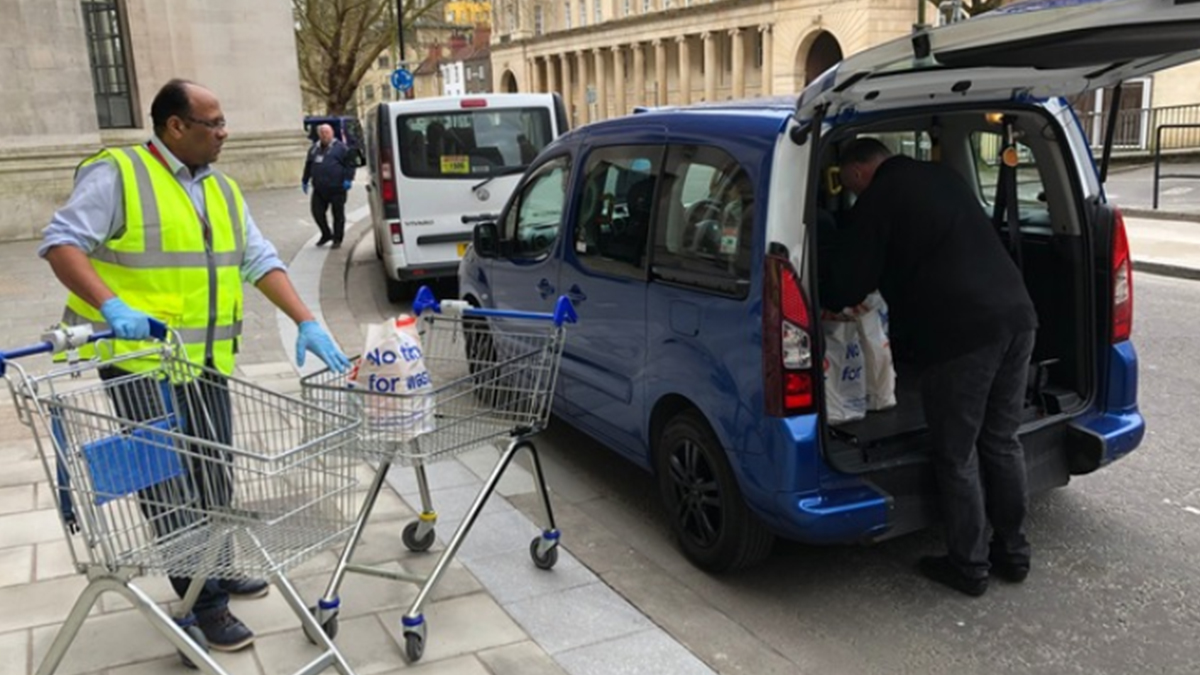 |
| Volunteers packing shopping. Image credit: We Are Bristol |
Why study community resilience?
Climate change has made it more important to understand how we respond to major shocks and disasters, as they are likely to increase in both frequency and severity in future. While the physical infrastructure required to respond to different shocks - such as floods, heatwaves and pandemics – varies greatly, building strong social and community infrastructure strengthens resilience to many different events. A recent report from the national community network Locality discussed the case of Calderdale Council, which has faced three major flooding incidents in the last eight years. The knowledge, networks and partnerships built through coping with floods in the past made Calderdale more resilient and responsive to the Covid-19 crisis, despite being developed for a different purpose. Understanding the strengths and vulnerabilities of Bristol’s community infrastructure when exposed to a crisis is key to building long-term community resilience.
Community organisations in a crisis
To understand the strengths and weaknesses of community resilience in Bristol, I interviewed thirteen people working across the sector.
I found that community organisations were very well-placed to respond to this crisis. Those interviewed discussed how they could act quickly to meet community needs because their decisions weren’t subject to the same bureaucracy or hierarchical decision-making structure as local governments. The highly localised nature of community organisations also meant that they could deliver solutions and services that were tailored to the needs of the populations they served, like culturally appropriate meals or shopping for older residents.
Community organisations also had access to informal networks within their localities which allowed them to coordinate with local businesses, residents, and other voluntary organisations to deliver necessary services. In Easton, for example, there was coordination across community groups and businesses which allowed each organisation to focus on the service they were best placed to deliver, even if it meant ceding responsibility for their normal functions to another organisation who could deliver it more effectively. Up Our Street, for example, focused on providing resources for children, such as milk, nappies, and activity packs to their communities, identifying that this was a necessary role that they were well-placed to fill. Community alliances were particularly effective at this coordination, especially those who had access to physical spaces to use as community hubs for service delivery.
There were, however, a number of barriers which community organisations faced. Every single interviewee from the community sector raised the importance of funding sources. Due to central government cuts in recent years, many organisations became reliant on traded income and fundraising to deliver their services, sources of income generation which disappeared quickly during the lockdown. This meant that community organisations had to furlough staff and work on reduced incomes when the need for their services was at an unprecedented high. In contrast, those organisations with access to flexible, long-term grant funding emphasised how valuable it was to their response. A key message was that many organisations may not survive to respond to the next crisis without more resilient funding models.
Effective communication with local government was also cited as a challenge. Many Bristolians, particularly vulnerable members of the population, did not have direct access to information about the evolving crisis and relied heavily on community organisations. Improving communication between local governments and citizens, particularly through faith-based organisations, such as gurdwaras, mosques, and churches was recommended. More generally, many organisations felt communication and coordination with local government needs to be improved in future, given the depth of local knowledge and networks such organisations can offer to help improve services.
Indeed, the most effective community responses were achieved where Bristol City Council sought to enable and support the existing work being undertaken by community organisations. For example, the City Council’s Can Do platform and “We Are Bristol” helpline become important mechanisms for urgent recruitment of volunteers. BCC also removed a lot of superfluous red tape and bureaucracy, trusting organisations to act in the best interests of their communities and take greater responsibility. The Council became more reliant on the efforts of the community sector than before, and the trust built between them has provided community organisations with more “soft power” to influence decision-making. Continuing this trusting and enabling relationship will be key to recovery, and ensuring that community resilience is enhanced moving forward.
Key lessons
Building resilient community and social infrastructure is key to safeguarding Bristol’s sustainable future. Community organisations are vital first responders in a crisis and have the necessary networks and knowledge in their communities to understand and deliver what their communities need. By supporting these organisations, through promoting their long-term financial stability and including them in community decision-making, it is possible to create a more resilient Bristol which will be able to respond to any future shocks.
-----------------------
This blog is written by Environmental Policy and Management MSc graduate Eveline Hall.
 |
| Eveline Hall |
